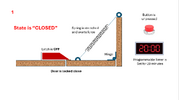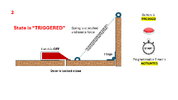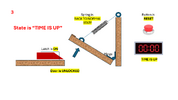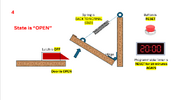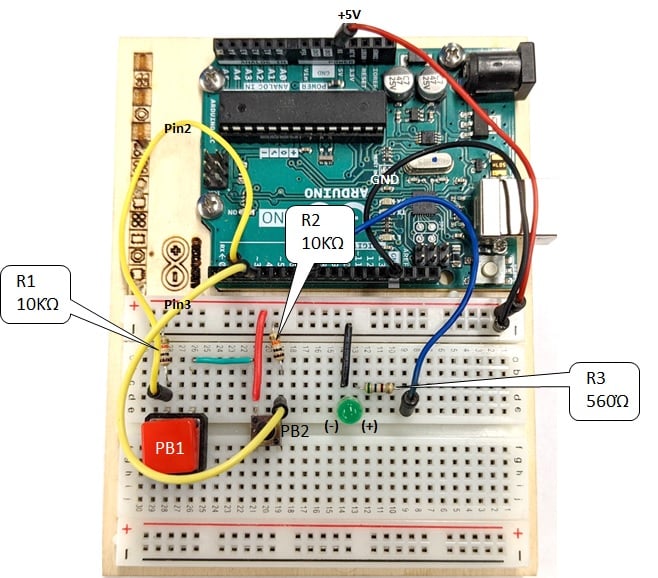I'm seeking a relatively robust solenoid latch, preferably 12-volt, that can retract after a programmed time interval, such as 20 minutes, upon pressing a trigger button. This action will enable the cabinet door, under constant pull by a spring, to open.
I've provided diagrams illustrating the following states:
I'm open to suggestions on the easiest method to achieve this. While I understand it can be accomplished with an Arduino, I believe a basic timer might suffice. Please share your insights.
this is not a complicated circuit and its a one off process. meaning it has to be operational over a course of day. the batteries could idealy be over-the-counter type batteries and the solenoid is basic 10 volt from amazon or similar
I've provided diagrams illustrating the following states:
- The door is closed.
- The button is pressed, initiating the timer.
- The latch is contracted, allowing the door to open.
- The latch returns to its normal state, keeping the door open.
I'm open to suggestions on the easiest method to achieve this. While I understand it can be accomplished with an Arduino, I believe a basic timer might suffice. Please share your insights.
this is not a complicated circuit and its a one off process. meaning it has to be operational over a course of day. the batteries could idealy be over-the-counter type batteries and the solenoid is basic 10 volt from amazon or similar
Attachments
Last edited:

